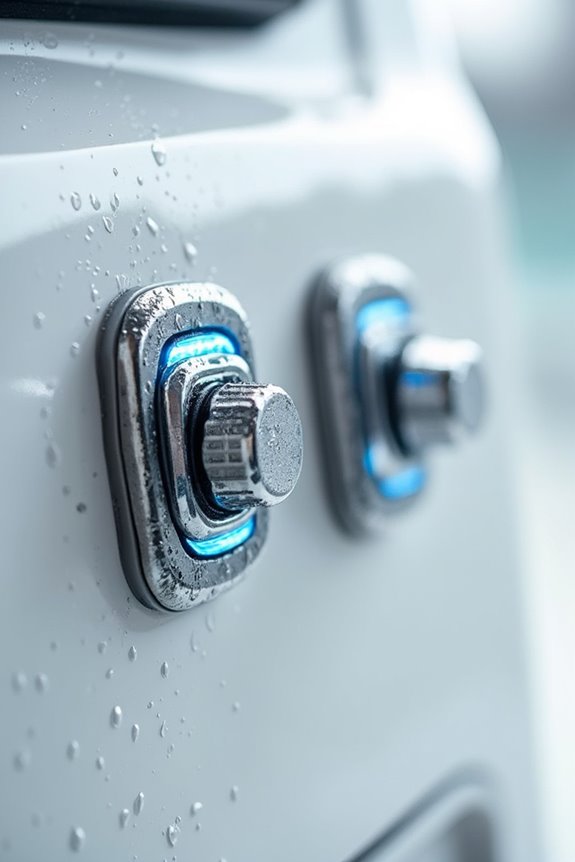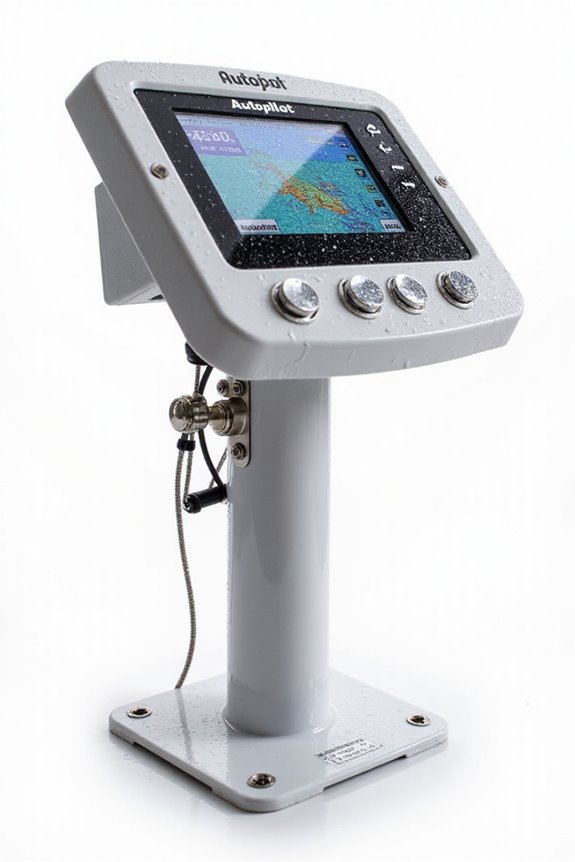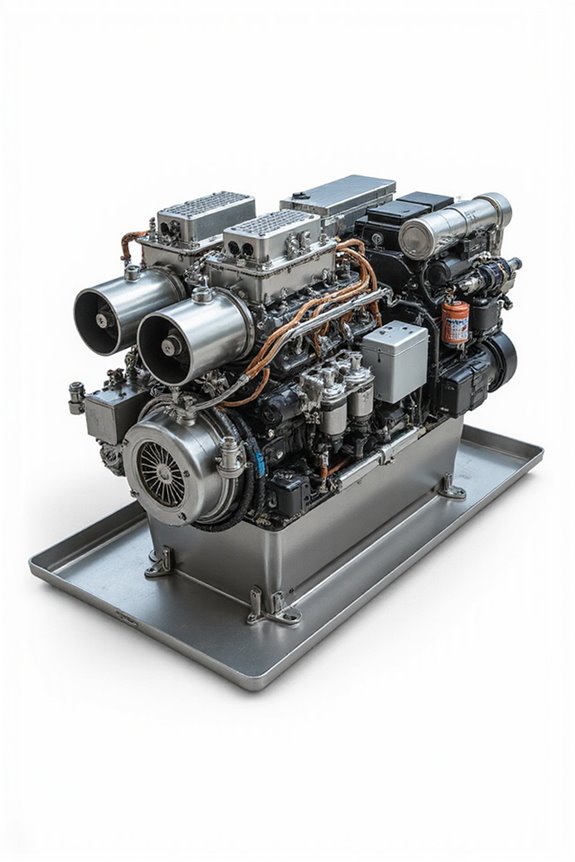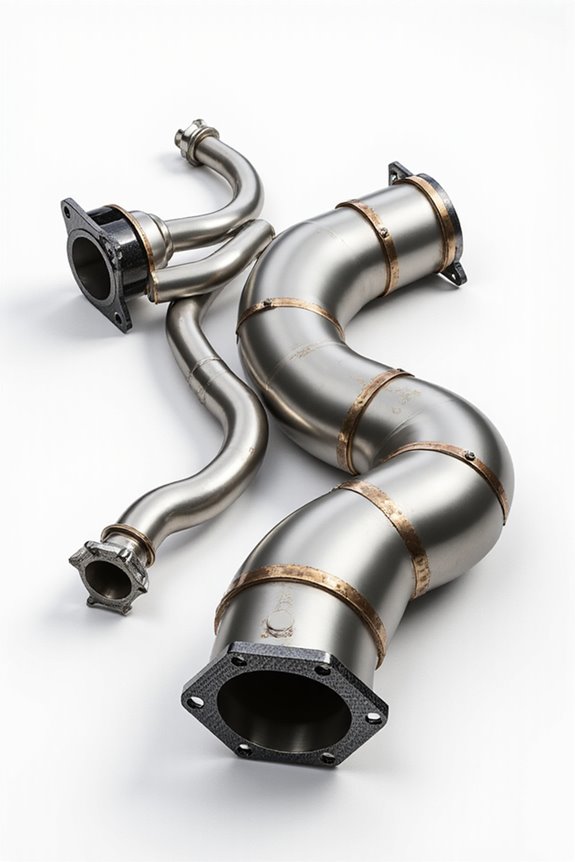When it comes to waterproof switches for boats and yachts, think of them as your system’s unsung heroes—built tough with marine-grade metals and sealed plastics to fend off salt, water, and vibration. They handle 12V or 24V systems, often rated IP67 for serious water protection, and can switch 10 to 30 amps of current without breaking a sweat. Whether toggle, rocker, or push-button, proper installation and compliance with marine standards keep everything safe and smooth. Curious about how these little powerhouses make it all work?
Key Takeaways
- Marine waterproof switches use corrosion-resistant metals and sealed casings to prevent moisture and ensure durability in harsh marine environments.
- Common switch types include toggle, rocker, and push-button, each serving specific boat functions like lighting, pumps, or battery control.
- Waterproof ratings IP65 to IP67 guarantee protection against water jets and temporary submersion, crucial for safety on boats and yachts.
- Proper installation uses marine-grade sealants, corrosion-resistant hardware, and angled mounting panels to maintain waterproof integrity.
- Compliance with UL/CE standards and marine-grade materials ensures switches withstand corrosion, UV exposure, and electrical safety requirements.
Construction and Materials of Marine Waterproof Switches
Although waterproof switches for boats and yachts might seem simple at first glance, their construction and materials are actually quite clever and specifically chosen to handle tough marine conditions. We rely on waterproof materials like corrosion-resistant metals—think stainless steel and marine-grade aluminum—to keep switches looking sharp and working longer. Reinforced plastics, such as polycarbonate and ABS, form tough, water-tight casings that shrug off salt spray and accidental bumps. Ever wonder how switches stay dry inside? It’s thanks to sealed housings with gaskets and rubber boots that block moisture and dust, boosting switch longevity. Plus, flush mount designs reduce water exposure and make cleanup a breeze. So when you’re choosing switches, remember: those smart materials and careful building really pay off for our boats’ durability and performance.
Electrical Specifications and Performance Ratings
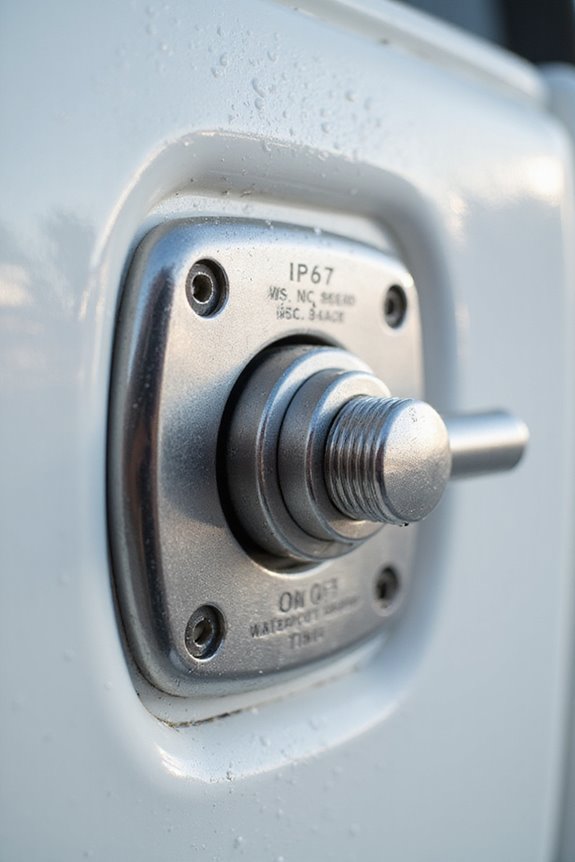
Now that we’ve looked at how marine waterproof switches are built tough enough to handle salty air and splashes, let’s chat about what really keeps them humming—those all-important electrical specs and performance ratings. For marine applications, switch ratings usually cover 12V or 24V DC systems, with current capacities from 10A up to 30A, perfect for everything from simple lights to high-power accessories. Durability? Expect at least 50,000 electrical cycles and rugged IP65 to IP67 waterproof ratings—so no worries about water sneaking in. Plus, many switches handle extreme temps (-40°C to 75°C) and harsh salt spray. Safety features like overvoltage and fuse protection keep things smooth. So, if you want your boat’s switches to last as long as your sea adventures, these specs are your go-to measure.
Types and Functional Uses on Boats and Yachts
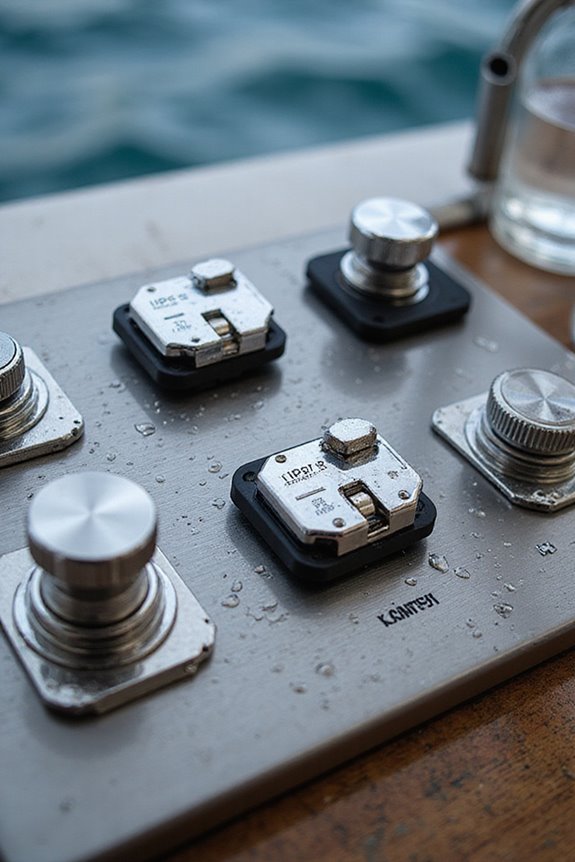
Since we’re talking about waterproof switches on boats and yachts, it’s worth diving into the types you’re likely to find and how they actually get used out on the water. From toggle switches—classic and rugged with stainless steel parts—to rocker switches that light up for those late-night trips, there’s plenty to choose from. Push-button switches offer tactile, maintenance-free control, perfect for trim tabs or bilge pumps. Combination switches handle battery management or multiple functions with ease. When deciding on switch selection, consider operational efficiency—switches that are easy to use, durable, and waterproof guarantee smooth control of lighting, navigation gear, and safety systems. After all, nothing kills the mood like a stubborn switch mid-deck party or during a storm, right? Choosing right keeps things running effortlessly, letting us enjoy the adventure instead of fussing with tech.
Installation Techniques and Mounting Solutions
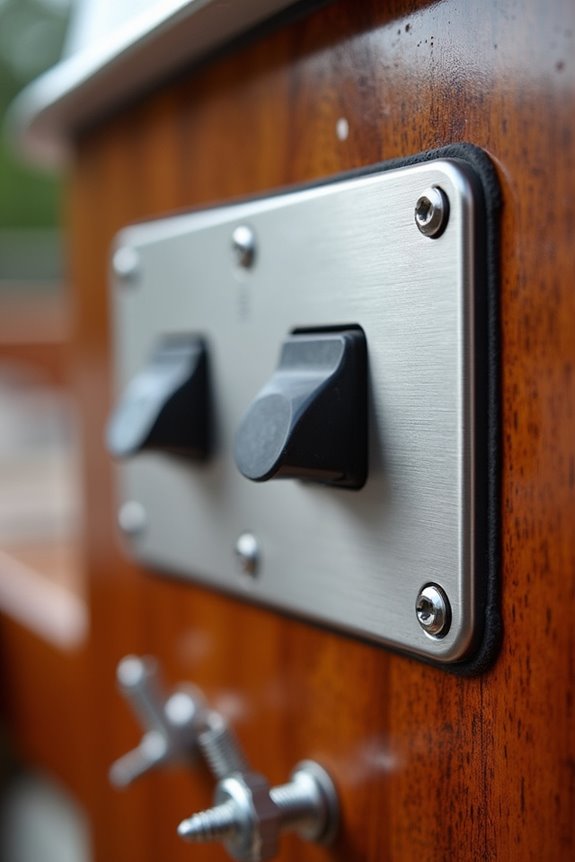
Getting your waterproof switch panel installed right takes careful planning—trust me, it’s not just about drilling holes and screwing things in. We’ve got to think about mounting strategies that keep water out, like positioning panels slightly angled or horizontally, and sealing those holes with marine-grade silicone. Using corrosion-resistant stainless steel hardware helps prevent rusty messes later, which none of us want. Then there’s wiring considerations: choosing marine-grade wires, mapping circuits beforehand, and keeping everything tidy with cable ties so future upgrades aren’t a nightmare. Don’t forget inline fuses near the power source for safety—and testing each switch to confirm it works without causing shorts. Together, these installation techniques guarantee reliability and protect your boat’s electrical heart, making it easier to enjoy the water without surprises. Now, who doesn’t like a smooth, no-drama setup?
Compliance With Environmental and Safety Standards

While installing a waterproof switch is essential, ensuring it meets environmental and safety standards is what truly keeps our boat’s electrical system reliable and safe. We need to look for regulatory compliance—think IP67 ratings, UL or CE markings—which guarantee these switches can handle everything from salt spray to sudden splashes. Safety certifications aren’t just fancy labels; they mean the switch has passed rigorous tests for corrosion resistance, UV protection, and even short circuit prevention. After all, nobody wants a switch that fizzles out or sparks on the water, right? So, when choosing, let’s prioritize switches crafted with marine-grade materials and sealed to perfection. This way, we can enjoy smooth sailing, knowing our electrical parts are ready to brave any marine adventure alongside us.
Frequently Asked Questions
How Often Should Waterproof Switches on Boats Be Inspected or Replaced?
Think of our switches as loyal sentinels; to keep their switch performance strong, we should honor inspection frequency annually and replace them if wear shows. Together, we’ll guarantee our vessels sail safely with dependable protection.
Can Waterproof Switches Be Used in Saltwater Spray Conditions Safely?
We can confidently say waterproof switches, designed with corrosion-resistant materials and sealed properly, handle saltwater corrosion well. Their switch durability truly keeps our marine setups reliable, making us proud members of the boating community who trust their gear.
Are There Specific Brands Known for Marine Waterproof Switch Reliability?
Imagine us cruising with confidence under salty sprays; marine switch brands like Carling and Bocatech shine with top waterproof switch features. Together, we trust these durable, corrosion-resistant switches that keep our shared adventures safe and seamless.
What Maintenance Is Recommended to Prolong Switch Lifespan?
We recommend regular switch cleaning to remove dirt and debris, coupled with corrosion prevention using marine-grade lubricants and dielectric grease. Together, these keep our switches reliable, extending their lifespan and ensuring smooth, worry-free operation on every voyage.
How Do Waterproof Switches Impact Overall Battery Life on Boats?
We protect battery efficiency, prevent switch corrosion, and extend battery life by using waterproof switches. Together, we guarantee circuits stay sealed, reduce parasitic drains, and keep our boats ready for every adventure without worrying about power loss.

